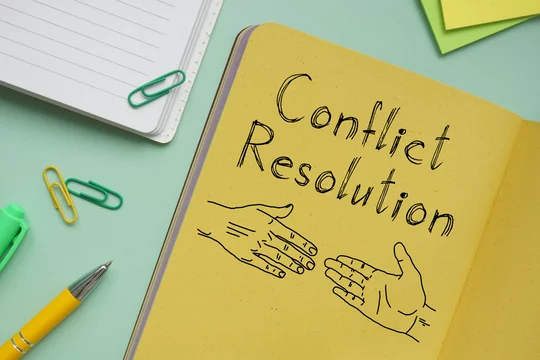In every aspect of life, conflicts are inevitable. Whether in personal relationships, professional environments, or societal interactions, disagreements arise, often leading to tension and disruption. However, the key to navigating conflicts lies not merely in resolving them but in continuously refining the process of conflict resolution itself.

Conflict resolution is not a one-time fix but rather a dynamic and ongoing endeavor. It requires a commitment to growth, adaptability, and the willingness to embrace change. Continuous improvement in conflict resolution is not just about managing disputes; it’s about fostering understanding, collaboration, and ultimately, achieving harmonious outcomes.
One fundamental aspect of continuous improvement in conflict resolution is the cultivation of effective communication skills. Clear and empathetic communication lays the foundation for constructive dialogue, enabling parties to express their perspectives openly while actively listening to others. By continually honing communication skills, individuals can enhance their ability to convey thoughts, emotions, and concerns effectively, thereby reducing misunderstandings and defusing tensions.

Moreover, embracing diversity and inclusivity is paramount in the process of conflict resolution. Recognizing and valuing diverse perspectives fosters creativity and innovation in problem-solving. Embracing inclusivity ensures that all voices are heard and respected, promoting a sense of belonging and equity. By continuously striving to create an environment where diversity is celebrated and differences are seen as strengths, conflict resolution processes become more comprehensive and enriching.
Another crucial aspect of continuous improvement in conflict resolution is the integration of feedback mechanisms. Soliciting feedback from stakeholders involved in the conflict resolution process provides valuable insights into its effectiveness and areas for enhancement. By actively seeking input from participants, facilitators can identify patterns, assess the impact of interventions, and implement adjustments accordingly. Embracing feedback as a catalyst for growth fosters a culture of learning and refinement, driving continuous improvement in conflict resolution practices.

Furthermore, leveraging technology can significantly enhance the efficiency and efficacy of conflict resolution processes. From online mediation platforms to collaborative tools for virtual dialogue, technology offers innovative solutions for overcoming geographical barriers and facilitating communication. By embracing technological advancements, organizations and individuals can streamline conflict resolution processes, increase accessibility, and reach resolutions more efficiently.
Ultimately, continuous improvement in conflict resolution requires a mindset shift – from viewing conflicts as obstacles to opportunities for growth and transformation. By embracing a proactive approach to conflict resolution, individuals and organizations can cultivate resilience, strengthen relationships, and foster a culture of trust and cooperation. Through ongoing learning, adaptation, and innovation, we can navigate conflicts with grace and integrity, paving the way for sustainable and harmonious solutions.

In conclusion, continuous improvement in conflict resolution is not a destination but a journey of discovery and evolution. By prioritizing effective communication, embracing diversity and inclusivity, integrating feedback mechanisms, and leveraging technology, we can elevate conflict resolution processes to new heights. As we commit ourselves to continuous improvement, we unlock the potential for positive change, fostering healthier relationships, and building stronger communities.

